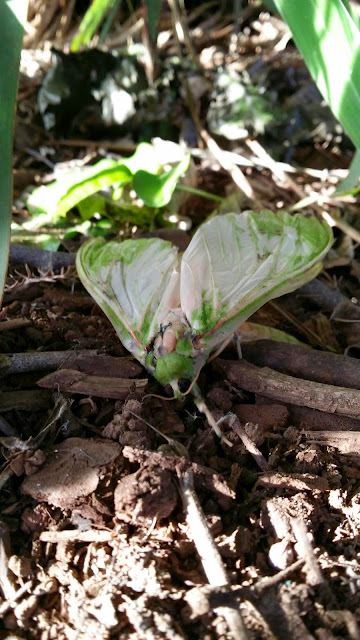At our school we have been very lucky to find a Puriri moth. And as we have been working on transactional writing (and were planning to write about the life cycle of a frog today). This provided a high interest topic for the children.
We first looked up a book and read a story about the Puriri moth, that Mrs G knew would help us.

Then we went out and looked at the one in our school garden (and took some photos). After that we looked up fact about the Puriri moth and its life cycle. This lead to great discussions and us making notes on our own transactional writing frameworks, and those of us who wanted to write about the Puriri moth got to over a series of a few days write a wonderful piece of writing based on the Puriri moths lifecycle.
Here are a few photos we took.
What the eggs look like shortly after being layed
A few hours later they look like this
The Puriri moth even layed an egg on Mrs G's hand when she was picking it up off the garden path.
Can you spot it???
The Puriri moth tucked safely away in a new hiding place to continue laying its eggs
A few interesting facts we found out



